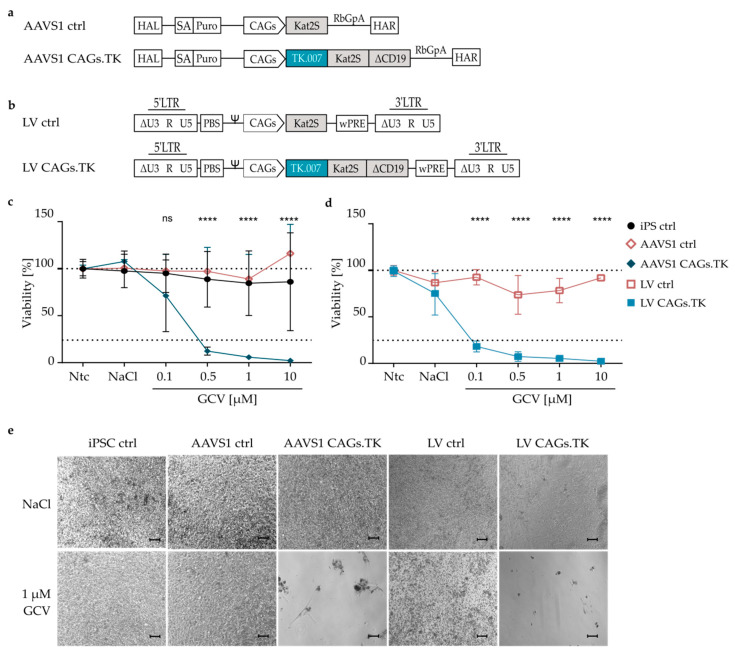Figure 1.
Efficient Ganciclovir-dependent in vitro ablation of TK.007 transgenic iPSC. (a) Plasmid donors for TALEN-mediated integration of the indicated cassette flanked by homology arms into the AAVS1 safe harbor locus on chromosome 19. The control (AAVS1 ctrl) expresses the far-red fluorescence protein Kat2S from the CAGs promoter, whereas the AAVS1 CAGs.TK additionally encodes for the TK.007 safety switch and the ΔCD19 surface tag. HAL = left homology arm; SA = splice acceptor; Puro = puromycin resistance gene; RbGpA = rabbit beta-globin poly-A termination signal; HAR = right homology arm. (b) Architecture of the SIN lentiviral control vector (LV ctrl) encoding for Kat2S and the vector encoding for the TK.007 safety switch and the Kat2S and ΔCD19 markers (LV CAGs.TK). LTR = long terminal repeat; ∆U3 = deleted enhancer/promoter region; R = repeat region within the LTR; Ψ = PSI, packaging signal; PBS = primer binding site; wPRE = woodchuck post-transcriptional regulatory element. (c,d) Percentage of viability relative to non-treated control (Ntc) as determined by CellTiterGlo® 2.0 cell viability assay. Unmodified iPSC (iPSC ctrl) and transgenic iPSC (AAVS1 ctrl, AAVS1 CAGs.TK, LV ctrl and LV CAGs.TK) were treated for 120 h with GCV at the indicated concentrations, treated with the vehicle (NaCl) only or left untreated. iPSC ctrl N = 5–7, AAVS1 ctrl N = 3, AAVS1 TK N = 3, LV ctrl: N = 2–3, LV CAGs.TK N = 2–3. Dotted lines indicate 100% or 25%. (e) Microscopy images of the indicated iPSC cultures treated with vehicle (NaCl) or with 1 µM GCV upon 120 h of treatment. Scale bar 100 µm. **** p ≤ 0.0001.

